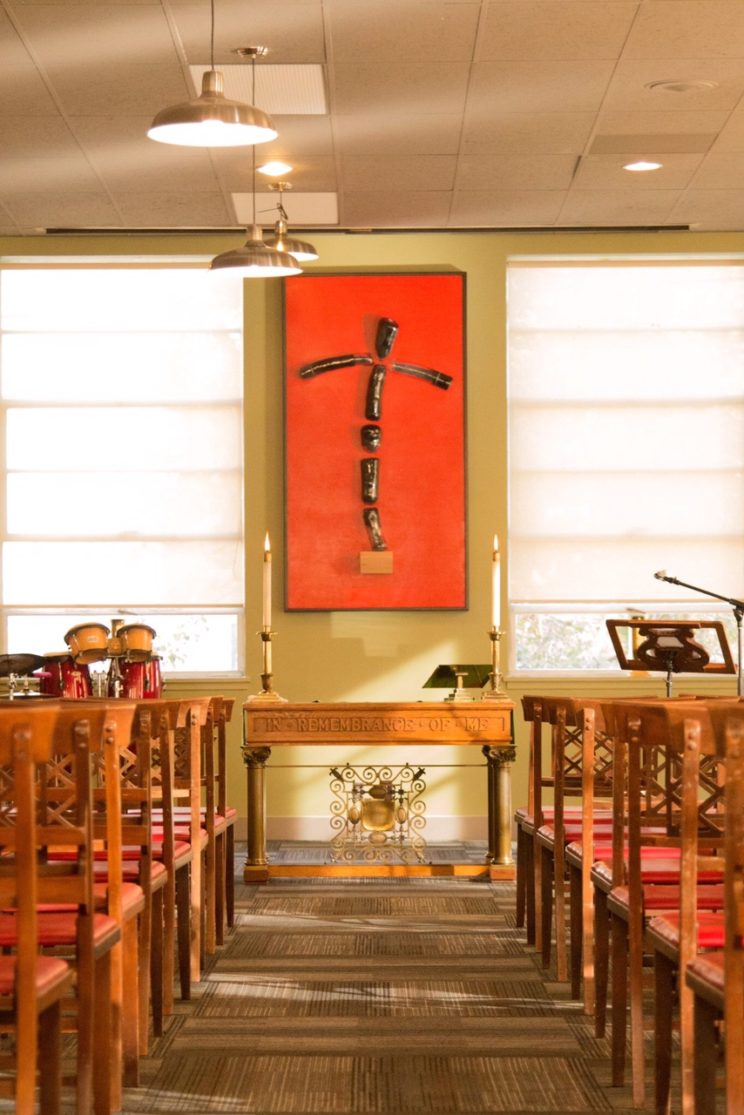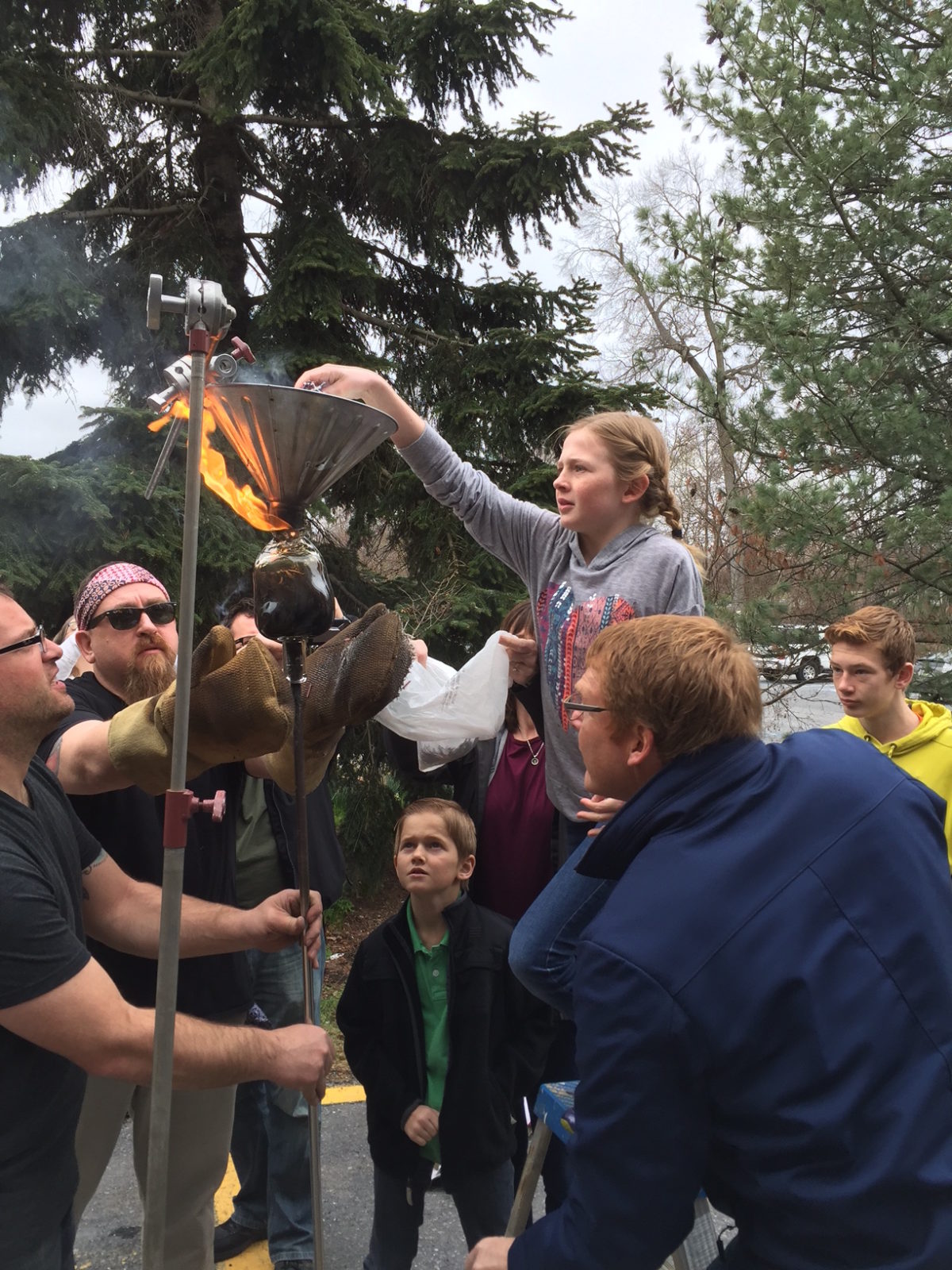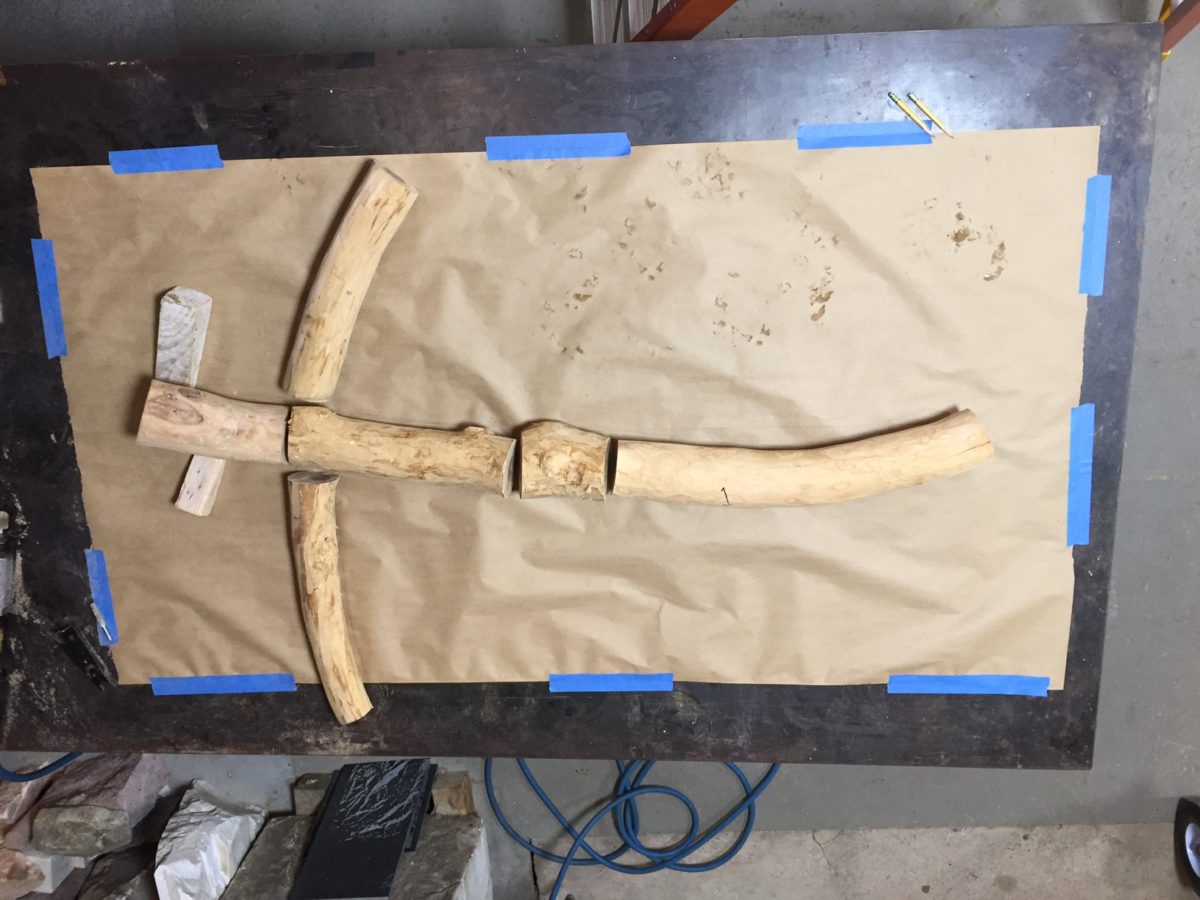 Sculptor and art professor Theodore Prescott describes a collaborative Lenten project he led for a congregation in the city of Harrisburg, PA. We hope it provides rich reflection for readers as Holy Week begins. The project will also be featured in the forthcoming InterVarsity Press book Contemporary Art and the Church: A Conversation Between Two Worlds.
Sculptor and art professor Theodore Prescott describes a collaborative Lenten project he led for a congregation in the city of Harrisburg, PA. We hope it provides rich reflection for readers as Holy Week begins. The project will also be featured in the forthcoming InterVarsity Press book Contemporary Art and the Church: A Conversation Between Two Worlds.
I professed faith in Christ in 1970, right as I was completing my M.F.A. in sculpture. I was living in Baltimore, where I studied at the Rinehart School of Sculpture, Maryland Institute College of Art (MICA). The results of my conversion were mixed. My behavior certainly changed in some positive ways, but artistically I was stymied. I could not find any contemporary role models. The friends I told about my profession generally expressed incredulity, and a few responded with some eye rolling. I asked the director of Rinehart if he knew of any Christians at MICA. He thought a bit, and then said that there might be one in the Art Education program. Since I was looking for “artists”, not educators, I never followed up on that, which is a little ironic in light of my subsequent career. Finally, through a college friend, I learned of an artist who was a Christian studying in Philadelphia, and drove up to meet him. All of this illustrates how the terrain between contemporary art and the Christian faith seemed like a vast unmapped wilderness for me.
After a few years of seeking to understand the relationship between faith and art intellectually—during which time I was not making things—I began to produce sculpture again. I have never considered myself a “Christian artist” in the sense of always using discernibly Christian imagery to inform an audience about the faith. But the Christian faith offers the artist a treasure house of imagery and ideas to work with, so relatively early on I chose to make some crosses. My choice was partly because the cross was—and still is—such a cultural cliché, and therefore almost invisible. Someone should write a book about how a symbol with almost infinite richness and depth devolved into a cultural cipher. Walker Percy noted a parallel phenomenon with Christian words, writing that “the old words of grace are worn smooth as poker chips.” So I set out to make crosses that drew on the language and imagery of contemporary art, with the goal of gaining some artistic insight. Most of the crosses I’ve sold have ended up in art collections, not in churches. The Second City Lenten Cross is an exception.
Second City Church is an old church, located in the small, struggling city of Harrisburg PA. Its origins stretch back to the 19th century, but its current character was formed by the union of a youngish homeless PCA congregation with an oldish UCC congregation that had a church building. The pastor, Peter Rowan learned of a cross I had made in 1996, All My Sins, and thought it might be the basis for a congregational meditation during Lent. For that cross I began by writing down all of the personal sins of “thought, word and deed” that I could remember. That took me about a month. While it wasn’t an exhaustive list, it was long enough and dark enough to be thoroughly depressing. By the end of that month I understood viscerally C. S. Lewis’s description of his feelings while writing Screwtape. I then transcribed that list to sheets of a very heavy and durable art paper, writing with a thick permanent ink marker. After finishing, I quickly chopped the papers into many tiny bits lest they be read by someone.
During that time of remembering I was also making molds for four forms that could be assembled into a cruciform image. I had engaged a glass artist to work with me, and when the molds were completed we met at a glass studio, and she blew hollow glass forms into the molds. I then quickly poured my confetti-like paper bits into each glass form. Glass is blown at about 2000 degrees F, so the paper ignited immediately. Once all the paper was inside, the forms were slumped shut and annealed, during which time the remaining burning paper blackened much of the interior of the glass forms.
Materials (or substances) and processes are two preoccupations or interests for many contemporary artists. For me, both carry poetic resonances that are rich with potential faith associations. Here, a fiery consumption of my transgressions—“the handwriting of ordinances against us” (Col. 2:14)—through the process of making that cruciform image seemed to speak of Christ’s work in a fresh way. But I was surprised by the resemblance of the finished cross to medieval reliquaries, which connected it to historic Christian imagery and practice.
Peter Rowan believed that seeing and helping to make a cross like All My Sins might provide the church with a unique way to meditate on the meaning of Lent, so he asked me to create a cross for the congregation that would coincide with a series of sermons during Lent (2016) based on “The Seven Deadly Sins”. The resulting cross would be filled with the congregation’s written sins, and be placed in the church upon its completion. Neither of us was sure of what to expect. Participation was voluntary. After explaining to the congregation how I made the 1996 cross, we gave out heavy art paper, and permanent markers. About three weeks later we set up some paper shredders in the church social hall, and after the service people shredded their written sins. A few people expressed concern about their paper’s privacy, and seemed relieved when they placed it in the maw of the shredder. I’d guess about 75 people participated.
Roughly 50 people signed up to attend the glass blowing, so that they could personally put their paper in the hot glass forms. They came to the glass studio in shifts. Some came as families, with parents and children participating together. The glass artist, Rafe Henin, was intrigued by the communal and participatory nature of the event. People stood watching the forms being made, asking questions, and chatting together until it was time to put their sins in a form. It took about 10 hours to complete all of the forms.
I had made the forms for the molds out of apple limbs that had been peeled and simplified. I arranged them to suggest a crucified figure. Doing this connected our sin with Christ’s body, or as I Peter 2:24 says, “He himself bore our sins in his body on the tree…” In her recent and widely praised The Crucifixion: Understanding the Death of Jesus Christ (Eerdmans, 2015) Fleming Rutledge argues against seeing the empty cross as the “real” meaning of our faith, as though the crucifixion was just an episode on the way to the glory of the resurrection that empty crosses are meant to signify. She ends her chapter “The Primacy of the Cross” with this summary: “….the crucifixion is the touchstone of Christian authenticity, the unique feature by which everything else, including the resurrection, is given its true significance.”
It took several months before I had completed fitting and anchoring the glass forms into a panel that was painted with an intense red. After framing we installed it in the church social hall. Having looked at it there for about 6 months now, I can see that its imagery inhabits that ambiguous space between a cross and a crucifix that I aimed for. It can be “read” either way. Artistically it is definitely a child of this moment, with a pathetic affect to its demeanor. As a cross it is wobbly and inexact, looking back to primitive representations of the cross. As a crucifix it lacks the nobility and classicism of so many Renaissance depictions of the crucifixion, or the expressive anguish of many medieval and modern ones. Is pathos the right “tone” for the cross?
I can’t answer that. The cross is too deep and multivalent to have just one “true” aesthetic sensibility. But, I have been struck by the Second City Lenten Cross’s unintended resonance with one of Fleming Rutledge’s major concerns. She argues persuasively that we—especially in the American church—have lost sight of the “scandal” of the cross, in which there is no beauty, no naturally attractive religious message to help us improve ourselves. That seems about right for a cross that is literally full of the dead sins of people in Second City Church.
Images courtesy of Theodore Prescott

Theodore Prescott is a sculptor and writer who lives and works near Harrisburg PA. Prescott received a B.A. in Art from The Colorado College, and an M.F.A. from the Rinehart School of Sculpture at MICA. He has exhibited in the United States and Western Europe, completed several public commissions, and has work in public and private collections.In 1980 Prescott began the art major at Messiah College in Grantham, PA. By the end of his tenure at the school the program had grown to 125 students in three majors, with 7 full time and 3 part time faculty. He chaired the art program for a decade, and was the recipient of two successive 5 year terms as a Distinguished Professor of Art. He is currently an Emeritus Professor of Art at the college. Prescott was instrumental in founding the national organization CIVA (Christians in the Visual Arts), served as its president for two terms, and edited its triennial publication for more than a decade. His articles on art have appeared in several publications, including American Arts Quarterly, Image, and The New Criterion. He has edited one book on contemporary figurative art, and written three catalog essays for solo exhibitions by contemporary artists. Prescott’s sculpture is characterized by an interest in material substances, and their poetic and associative nature. He is versatile in the use of traditional sculptural materials like stone, wood, and metals, but also employs unconventional materials like coal, honey, and salt. The forms of his work are related to modernist sculpture, but his subject matter often draws on the beliefs and ideas found in the Christian tradition.

Leave a Reply